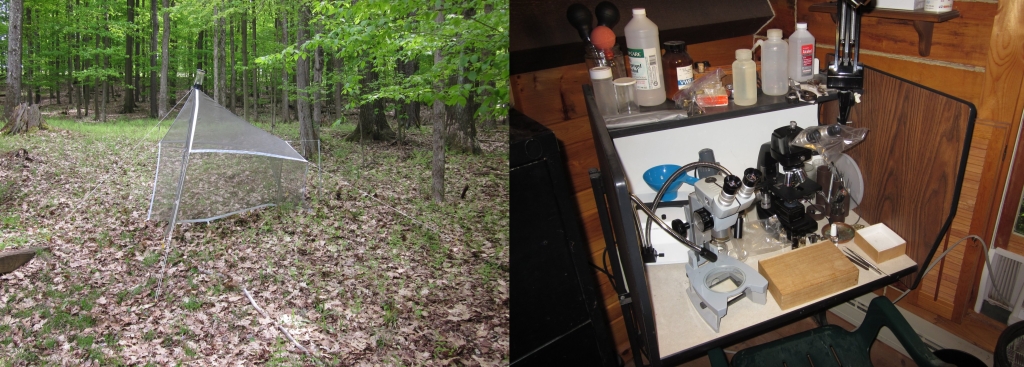Another Literature Citation
March 19, 2013It's a truism that the more that is happening, the less that is recorded. It's been that way with me at least for the last several months. In that time, I've figured out how to make distribution maps with a free package, Quantum GIS, that look as nice as the maps I've made at work with ArcGIS (I've been wanting an affordable package for mapping at home for years). And I got myself setup with Corel Draw, Corel Painter, and AutoDesk SketchBookPro to make line drawings and paintings directly using a computer, second monitor, and 12x12 Wacom drawing tablet. And last, I finally settled on an easy-to-use-and-modify database for documenting and annotating my asilid collection, called Small Museum Organizer Pro. I'll post something about each of these later. For now, though, I'm just going to mention a new literature citation for Laphria sacrator in Michican, namely Hancock (1911). The full reference is:
Hancock, J. L. 1911. Nature Sketches in Temperate America. xviii + 451 pp., Chapter IV. Mimicry, with Examples (frontispiece of entire book; also p. 127-129, 131 [in subchapter titled The Bumblebee's Mimic], Dasyllis sacrata [sic]. The model is stated to be Bombus consimilis, and the observations were made at Lakeside, Berrien County, Michigan. Several types of prey are also listed.).
Throughout the book this species is consistently referred to as "Dasyllis sacrata." This is presumably a mistake for Dasyllis sacrator, the old name for a species which is common in Michigan. On p. 128 Hancock implies that the fly was identified by C. T. Brues.
Hancock cites pp. 73-74 of Herrick's book, The Home Life of Wild Birds, as recording a bluebird feeding a bumble-bee mimic robber fly to its young. I looked this up and at least in the 1901 (first) edition the unfortuante fly is referred to on p. 73 simply as "a large robber fly" and on p. 74 as an "Asilus." My sense is that "Asilus" was being used generally to mean any robber fly. On p. 74 the fly is also said to be "hairy." Nothing was said about it being a mimic.


 Digg
Digg
 Facebook
Facebook
 StumbleUpon
StumbleUpon
 LinkedIn
LinkedIn
 Twitter
Twitter
 Email
Email